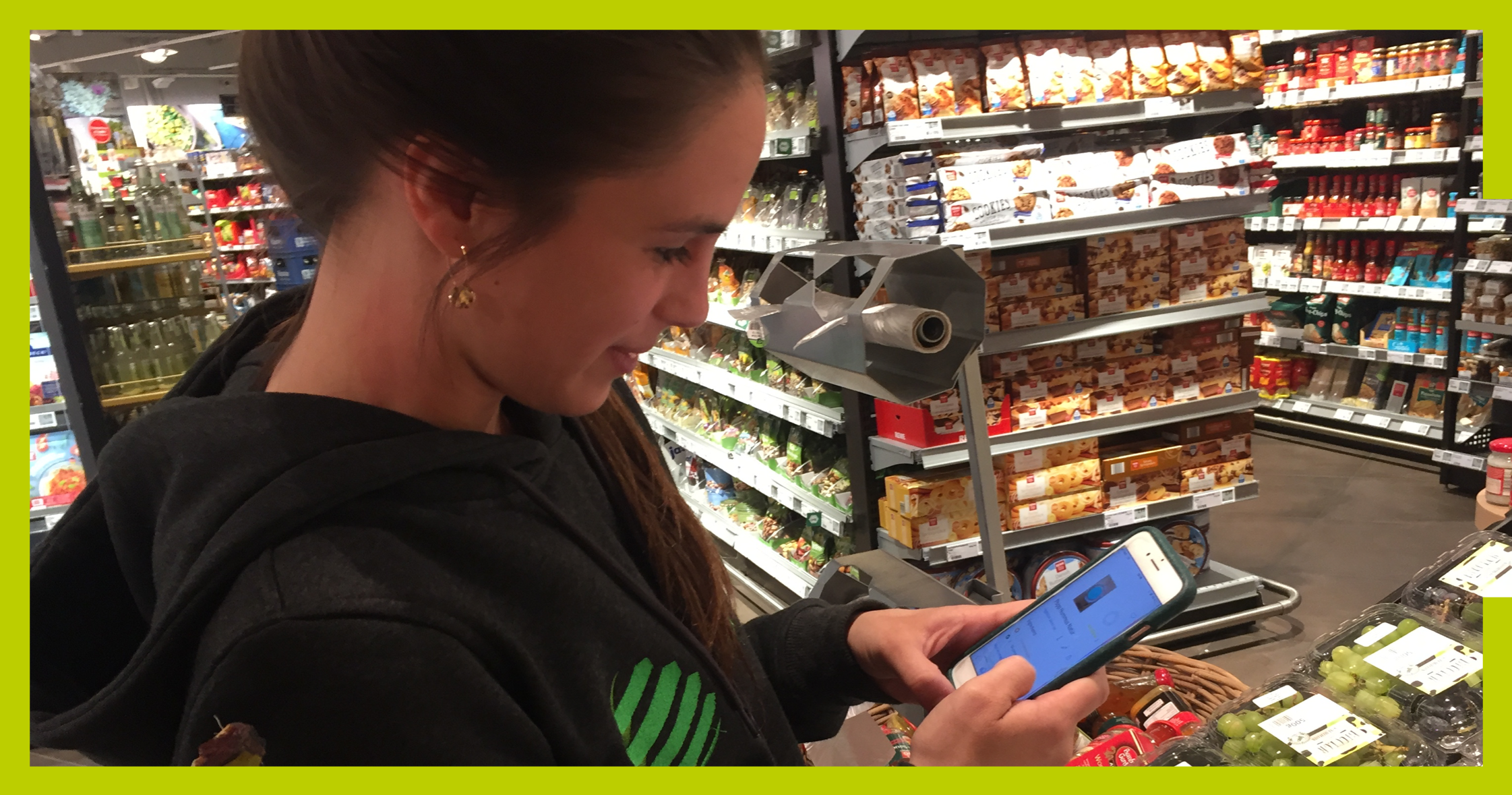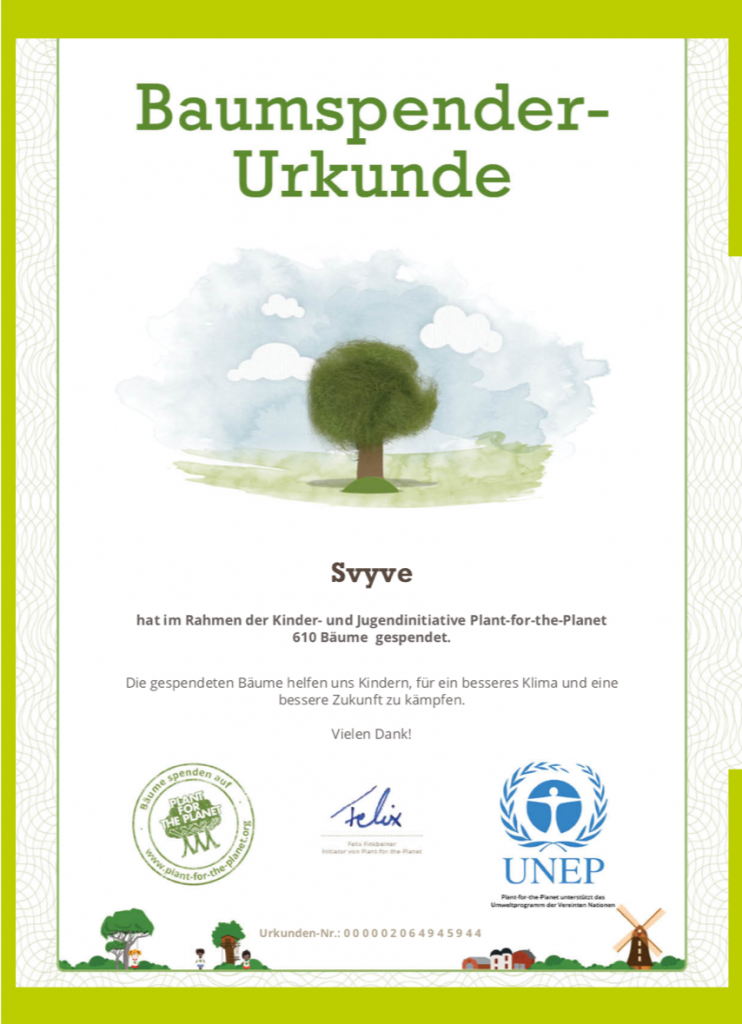CDTM reshaped the way I think about sustainability – through our sustainability initiative
In our own student sustainability initiative, my class (Spring 2019) has taken responsibility and made the Center life more sustainable. It span across all courses, and for me, my CDTM journey has reshaped the way I think about sustainability. It also affected how I want to integrate sustainability in my future life choices. But let’s start where it all began.
I must say, that our class (Spring 2019) encountered very special circumstances that contributed to the existence of our student sustainability initiative. It all started with the Trend Seminar. Before the topic of the Trend Seminar was revealed to us, I remember thinking “it has to be something that is being disrupted by technology - maybe aviation, mobility…?” But as I was shown, my thoughts were too basic. “The data-driven future of dairy” – that was our topic. My first thoughts were “Are you serious?! How boring is that?!” But I was proven wrong.
Sustainability starts there, where you least expect it – how our student sustainability initiative started.
One thing, that CDTM is doing well, is picking an industry which you would never think of. And that is mostly, because the technological disruption, that everyone talks about, didn’t happen yet, or is just about to happen. I learned that those areas are the most interesting to work on. Because there is so much potential. When it comes to the future of dairy, we were confronted a lot with the topic of sustainability. Given the current attention of climate change, we got to know the whole story of dairy farming. And for some of us, it was eye-opening. We realized how much action is needed in this industry. And finally, we saw how much impact technology can have if it’s used to promote sustainability in the food system. At the end of the Trend Seminar, many of our ideas were developed with attention to making agriculture more sustainable.
Integrating sustainable habits into our daily routines.
During the Trend Seminar, a lot of us tried to rethink our lifestyles. When it comes to food consumption, we often discussed and tried to figure out how we can replace the meat and dairy that we consume. We tried out new dairy substitutes, challenged ourselves to eat more vegetarian or even vegan, and thought about habits that produce less waste. Did you know, that in most restaurants you can bring your own take-out box? We even implemented it for us when going to eat at a kebab/falafel place around the corner. We called it our own student sustainability initiative. Small actions, step by step, transformed into real habit changes.
The Trend Seminar was just the beginning for the student sustainability initiative.
After the Trend Seminar, the Managing Product Development Course was the next one in our schedule. I was very happy to continue the next CDTM climate action initiative by working on a project together with KPMG Sustainability Services. Back then, our problem statement was very generic. The goal was to design a digital solution to nudge end-consumers towards more environmentally friendly behavior using data-driven insights and gamification elements. And everything was open to us. That means we had to find the “real problem” and the fitting solution ourselves. During the 3 months of this course, my team was very happy to deep-dive into the topic of climate change and sustainability. We learned that sustainability is a very complex construct that has to meet a variety of requirements. We have started a student sustainability initiative at CDTM and tried to help our friends to rethink their habits, with small actions. But how can we enable end-consumers to be more sustainable?
Consumer demand drives sustainability initiatives.
Many people asked us “Why do you even want to approach end-consumers? It’s the producers that are responsible for all the pollution that we face!” And of course, they were right. But the producers represent the supply. And what drives the supply? Right – demand. End-consumers. Some would say that we talk about different dimensions here. And those people would also be right. But what our team wanted to achieve, was a change of perspective. We wanted to develop a solution that shows people that everyone can contribute to climate action. With every single choice we make.
This is why we started to tackle the complex mind of the end-consumer. We wanted to know which areas have the highest willingness to change. Is it mobility? Is it private households? Or food consumption? Which areas can cause the most positive impact when people actually change their behavior? We started an online survey in which over 300(!) people participated, verified our results in personal interviews and focus groups. We followed up with scientific research to back everything up and came up with one area of climate action, with which everyone could start with. Food consumption. Food contributes over one third to our personal carbon footprint per year. And research confirms that by making more conscious and environmentally friendly food choices, we can reduce our food-related carbon footprint by up to 50% per year.
How can we reduce our food-related carbon footprint?
Given this problem statement, we started to develop our first end-consumer application called “SVYVE”. Eventually, with a pinch of hope, we have turned the serious topic of climate change into something actionable. How can the purchase of, for example, one single apple make a difference in climate change? By adding all purchases around the globe up. This is what we aimed for. Many of us, including me, have the same thoughts when going food shopping: “Does choosing this product or that product really make a difference? I don’t even know if this choice contributes something positive to the environment – there is no transparency.”
Students fighting climate change with SVYVE.
With SVYVE, we wanted to show that with every single choice we all can make a difference. We wanted to give end-consumers the choice to make informed buying decisions in the supermarket by finally being able to access product life cycle emissions. Through scanning desired products and, eventually, choosing the most environmentally friendly product, a virtual tree can be grown and planted in a community. Those, users can either join or create themselves. The virtual trees would then be translated into planting real trees in cooperation with NGO’s.
Consumers with an interest in environmental consciousness could use SVYVE to not only reduce their carbon footprint by comparing different options in the supermarket and adding up their carbon-saving choices. Additionally, consumers would be rewarded for sharing their data. They have an interest in sharing their scanned and chosen products to push suppliers and retailers to meet their sustainability needs. On the other hand, food-related businesses have an interest in the scanned product data to optimize their assortment, and thus production cycles, which was the basis for our business model.

Our student sustainability initiative at the Product Design Fair
As the first action of SVYVE, we aimed for our first own climate action during the final presentation, the Product Design Fair. We asked the audience if they wanted to participate in our initiative to offset the yearly carbon emissions of one person. We opened up an online money pool to collect donations to plant trees. On tree equaled 1€ which would be donated to an organization called “plant-for-the-planet”. Within one evening only, we collected 610€, which equals to the carbon emissions of a German citizen in half a year.
Of course, real climate action requires a lot more, but we aimed to show that every single action can contribute to a sustainable future. Even if it’s about donating 1€ for one tree. We hereby want to thank the CDTM Community and everyone who donated money this evening, and especially all those who attached motivating messages to their donations.
THANK YOU! All donations are now transferred to plant-for-the-planet, and you can even track the tree-planting progress of this organization online
here.

We have so much talent in Munich – why waste all of it to work for a car manufacturer?!
Looking back, I always have to think about one statement a fellow CDTM student told me. “We need more student sustainability initiative. We have so much talent in Munich – why waste all of it to work for a car manufacturer?!” My time at CDTM showed me that there is so much potential to use technology to contribute to a sustainable future.
I would like to motivate all those who read this to rethink how to reshape the world that we live in and use our knowledge and talent that we acquire at university or our workplace. Always think about one of our CDTM core values: “We change & take responsibility: We are hands-on and eager to learn. We aspire to play an active role in a changing environment. We accept responsibility for ourselves, our actions, and the world around us.”
Join a student sustainability initiative – and contribute to your climate action
But not only your choice but also your voice can make a difference, too. You may have heard, that in connection to #fridaysforfuture a global climate strike is coming up, happening in the timeframe of 20th – 27th September. In Munich, a global climate strike demonstration is happening on Sept 20th, at noon at Königsplatz, perfect to join during your lunch break. Besides the demonstration, you can also call for climate action by e.g. organizing a training day at your workplace to educate your co-workers about climate crisis and call for more sustainability initiatives. If you are interested in how CDTM promotes climate action, you can join the CDTM Climate Club (more info
here).
No matter if it’s related to your food choice, your travel, your free time, or even your job.
Every choice makes a difference.
Klaudia Guzij (Spring 2019) & Team SVYVE (Carla Pegel-Hoderlein, Jana Petry, Katharina Brenner, Christian Spier)
_______________________________________________________________________________________________
Lastly, how can you also get to know an entire industry in 7 weeks? Do you also want to take part in the Trend Seminar, or other courses at CDTM?
HOW CAN I PARTICIPATE IN OTHER CDTM COURSES?
Become a CDTM student! Find out more about our Honours degree in Technology Management, and apply! :
https://www.cdtm.de/study/ 

